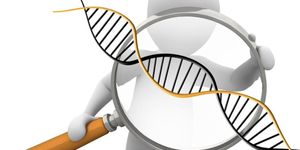Designing a glue as strong as mussels
A recent study published in the journal Advanced Science describes a novel type of glue inspired by the strong holdfast of mussels and barnacles. The glue was designed by Tufts University engineers at the Silklab to act as a powerful marine adhesive. Figuring out applicable uses for engineering such as this one is one of the many heavy-duty engineering vices that are dealt with.
"The composite we created works not only better underwater than most adhesives available today, it achieves that strength with much smaller quantities of material," explained corresponding author Professor Fiorenzo Omenetto, who teaches Engineering at Tufts and is director of the Silklab. "And because the material is made from extracted biological sources, and the chemistries are benign -- drawn from nature and largely avoiding synthetic steps or the use of volatile solvents -- it could have advantages in manufacturing as well."
The glue, developed by the Silklab’s “glue crew,” is composed of fibroin proteins from silkworms that are not only non-toxic to their surroundings, but unprecedently strong. With the addition of the polymer polydopamine, the silkworm proteins create a chemical crosslinking and iron bonding that produces a tenuous adhesive by way of sticky filaments in the same mechanism that is used by mussels to attach to nearby objects. The glue crew also drew inspiration from the anchoring capacities of barnacles by mimicking their cement-like proteins and adding them into a specific polymer arrangement optimized for adhesion.
"The combination of silk fibroin, polydopamine and iron brings together the same hierarchy of bonding and cross-linking that makes these barnacle and mussel adhesives so strong," said first author Marco Lo Presti. "We ended up with an adhesive that even looks like its natural counterpart under the microscope."
The team showed that their non-toxic glue has a strength of 2.4 megapascals (approximately 350 pounds per square inch) when resisting shear forces underwater, which is significantly stronger than currently available adhesives.
"The combination of likely safety, conservative use of material, and superior strength suggests potential utility for many industrial and marine applications and could even be suitable for consumer-oriented such as model building and household use," said Professor Gianluca Farinola, who worked on the project. "The fact that we have already used silk fibroin as a biocompatible material for medical use is leading us to explore those applications as well," concluded Omenetto.
Sources: Advanced Science, Science Daily








